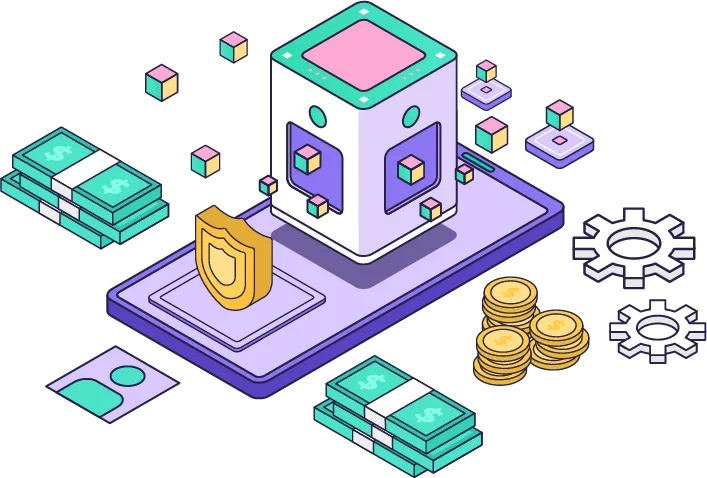How Are Companies Successfully Using Real World Asset Tokenization?
 Albert Peter
Albert Peter
In recent years, the concept of tokenization has emerged as a revolutionary development in the realm of finance and investment. It involves converting rights to real-world assets into digital tokens that can be managed and traded on a blockchain. This innovation is not only transforming traditional asset management but is also enabling greater liquidity, accessibility, and efficiency. Companies across various sectors are harnessing the power of real-world asset tokenization to create new business models, enhance operational efficiency, and open up previously inaccessible markets. In this blog, we will explore how companies are successfully leveraging real-world asset tokenization, the benefits they are reaping, and the challenges they face.
Understanding Real-World Asset Tokenization
Real-world asset tokenization involves the representation of tangible assets, such as real estate, commodities, or artwork, as digital tokens on a blockchain. Each token corresponds to a share or fraction of the underlying asset, allowing for fractional ownership. For instance, a property worth $1 million could be tokenized into 1,000 tokens, each representing a $1,000 stake in the asset. This democratizes investment opportunities, enabling individuals with limited capital to invest in high-value assets.
Key Components of Asset Tokenization
Blockchain Technology: The backbone of asset tokenization is blockchain technology, which ensures transparency, security, and immutability. Smart contracts facilitate the execution of transactions and automate processes, reducing the need for intermediaries.
Digital Tokens: Tokens are created to represent ownership rights in the asset. They can be fungible (like cryptocurrencies) or non-fungible (unique tokens representing specific assets).
Legal Framework: For tokenization to be effective, a legal framework must recognize and govern the ownership rights associated with the tokens. This may involve regulatory compliance, ensuring that tokenized assets are recognized as legitimate.
Marketplaces: Tokenized assets can be traded on various marketplaces, enabling liquidity and allowing investors to buy or sell their holdings easily.
How Companies Are Utilizing Real-World Asset Tokenization
1. Real Estate Investment
One of the most prominent applications of real-world asset tokenization is in the real estate sector. Companies like RealtyBits and Harbor have developed platforms that allow fractional ownership of real estate properties through tokenization. By breaking down properties into smaller, tradable tokens, these platforms lower the barrier to entry for investors.
Benefits:
Increased Liquidity: Traditional real estate investments often involve long holding periods, but tokenized assets can be traded on secondary markets, providing investors with quicker access to their capital.
Accessibility: With lower investment minimums, a broader range of investors can participate in real estate markets, democratizing access to high-value properties.
2. Art and Collectibles
The art market is notoriously opaque, with high entry costs and limited liquidity. Companies like Myco and CurioInvest are revolutionizing this space by tokenizing artwork and collectibles. By creating fractional ownership of valuable pieces, these companies make art investment accessible to a broader audience.
Benefits:
Fractional Ownership: Investors can own a share of a valuable artwork, making it possible for individuals to invest in pieces that were previously out of reach.
Transparent Valuation: Tokenization provides a transparent and traceable record of ownership, which can enhance trust and confidence in the art market.
3. Commodities and Supply Chain
Tokenization is also making waves in the commodities sector. Companies like Alchemist are using blockchain technology to tokenize physical commodities such as gold or silver. This enables easier trading and enhances the efficiency of supply chains.
Benefits:
Enhanced Traceability: Tokenization allows for better tracking of the provenance of commodities, ensuring authenticity and reducing the risk of fraud.
Improved Liquidity: By tokenizing commodities, companies can create markets where these assets can be traded more easily, enhancing liquidity.
4. Securities and Financial Instruments
Financial institutions are also exploring tokenization for securities and other financial instruments. Companies like Securitize and Polymath are enabling the issuance and management of tokenized securities, allowing for more efficient capital raising.
Benefits:
Cost Efficiency: Tokenization reduces the need for intermediaries, lowering transaction costs associated with issuing and trading securities.
24/7 Trading: Unlike traditional markets that operate within specific hours, tokenized securities can be traded around the clock, providing flexibility for investors.
5. Intellectual Property Rights
Tokenization is being applied to intellectual property rights as well. Companies like Myco are enabling the tokenization of patents and copyrights, allowing creators to monetize their intellectual assets more effectively.
Benefits:
Easier Licensing: Tokenized intellectual property can be easily licensed and traded, providing creators with new revenue streams.
Transparent Ownership: Blockchain provides a clear record of ownership, helping to resolve disputes over intellectual property rights.
Challenges and Considerations
While the potential of real-world asset tokenization is immense, several challenges must be addressed:
1. Regulatory Compliance
The regulatory landscape surrounding tokenization is still evolving. Companies must navigate complex legal frameworks to ensure compliance with securities laws and other regulations. Failing to do so can lead to legal repercussions and loss of investor trust.
2. Market Education
Many potential investors may not fully understand the concept of tokenization and its benefits. Companies need to invest in education and awareness campaigns to help individuals grasp the value of investing in tokenized assets.
3. Security Risks
While blockchain technology offers security, it is not immune to hacking and cyber threats. Companies must implement robust security measures to protect their platforms and investors' assets.
4. Valuation Challenges
Valuing tokenized assets can be complex, especially for unique items like art or intellectual property. Establishing fair market values and ensuring liquidity can pose challenges.
Conclusion
Real-world asset tokenization is paving the way for a new era of investment and asset management. Companies across various sectors are successfully utilizing this technology to enhance liquidity, democratize access, and create new revenue streams. While challenges remain, the potential benefits of tokenization are driving innovation and transforming traditional industries. As the regulatory landscape evolves and technology matures, we can expect to see even more widespread adoption of asset tokenization, unlocking new opportunities for both companies and investors alike. The future of investment is here, and it is tokenized.
Subscribe to my newsletter
Read articles from Albert Peter directly inside your inbox. Subscribe to the newsletter, and don't miss out.
Written by

Albert Peter
Albert Peter
A seasoned full stack developer with a passion for sharing his expertise in the world of web development.Through my insightful and informative blog, I provides valuable insights, tips, and tutorials for fellow developers looking to master the art of full stack development.